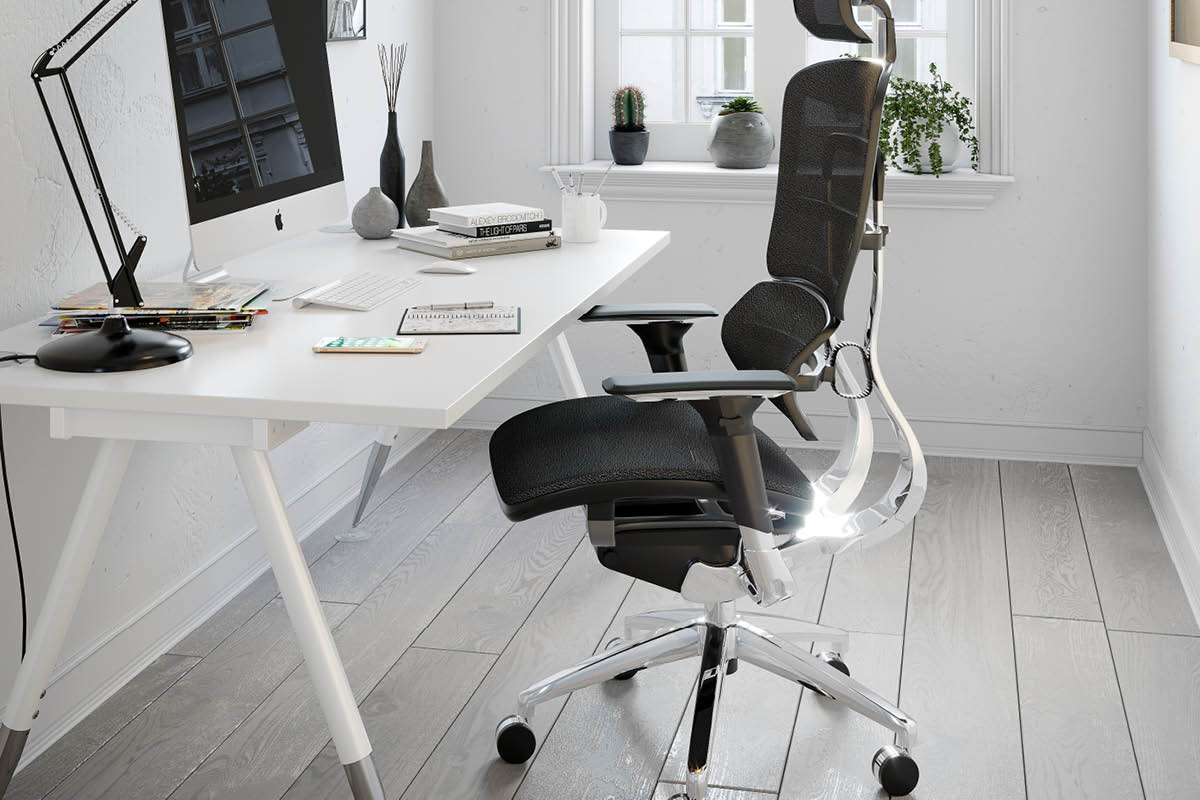
Throughout the years a growing number of office workers have started to experience back pain, developing at an increasingly young age. While this can be due to a number of reasons, overwhelmingly it is the result of not sitting correctly. Bad posture is a widespread concern which can have uncomfortable consequences and can affect everyday life. It is therefore imperative that companies purchase good ergonomic chairs to improve employee’s quality of living by minimalising pressure on muscles and joints, increasing blood flow and hindering muscle deterioration. Still, there are other reasons for both big and small businesses owners and leaders to invest in good ergonomic seating.
Ergonomic chairs have shown to increase productivity within the workforce. A good standard of health encourages and allows individuals to work harder — which also increases the success rate of any given organisation, benefitting both the employer and the employee.
Company engagement is equally relevant in correlation to ergonomic seating. When a business invests in their employees, it showcases that health and well-being are prioritised and that at this specific organisation workers are valued. The outcome exhibits increased participation, which is extremely beneficial as hard working staff are less likely to seek employment elsewhere.
Unfortunately, a vast number of companies still uses seating that don’t meet current regulations, often unknowingly.
It is important that this inconsistency see a change and that all organisations offer ergonomic seating to its staff and not simply to members with pre-existing back and neck problems. Early prevention is key, as these possible health conditions can be easily avoided with the right chair.
Additionally, it is essential that employers are able to recognise signs of employee discomfort in the office environment. If a worker brings in a lumbar support cushion to ease potential pain it is imperative for the employer to acknowledge the problem and be the first to face the issue, before complaints are made and workers are in need of time off due to health related issues. Equally, it is influential for employees to alert those in charge of potentially painful and hazardous seating.
So what should you think about when upgrading your office chairs? Here’s what to look out for:
Individuality. Not one person is built the same, therefore adjustability is key. If your company employs a large number of people, you will have staff of all sizes and shapes and the chair that you buy ultimately needs to be flexible and versatile and fit them all. So go for seating that you can adjust to guarantee a more comfortable workspace for everyone. This includes:
- Height. Pick a chair with adjustable back and feet height. Being able to increase and decrease your seating’s height allows each individual to have their feet flat on the floor and thighs at a 90 degree angle, which helps to better bad posture. If necessary use a footstool to fully achieve this. Adjustment of the height should also take your forearms into consideration. Make sure that they are level with the desk and that there’s enough space for hands and wrists to be fully supported. Another aspect to think of is the height in correlation to your VDU screen. Eyes should be level with the top of the screen and the distance needs to be about 700mm.
- Width and depth. You need to be able to adjust the width of your chosen chair so it can adapt to anyone. It is also important to be able to change the seat depth so all can sit comfortably while leaving 50mm between the seat edge and the inside leg.
- Seat. An adjustable seat is also necessary. Make sure that it is slightly tilted forward to achieve even pressure on the underside of the leg and the buttocks.
- Support. The chair that you ultimately purchase should fully support the natural curve of a person’s back. Special focus should be on the lower back — the lumber region. This area needs to be fully supported or you can begin to slouch, which in turn eliminates the curve of your back, making it flatter. A good ergonomic chair will have lumber adjustment which protects from slouching and unnecessary pain. As well as all of this, the armrest also needs to be adjustable to make sure that you can rest your arms while not putting strain on your shoulders.
- Flexibility. The office chair needs to be flexible, to encourage movement in all directions without having to stand up abruptly and subject your back to unnecessary strain and harm. The swivel of the chair is, in this case, vital for well-functioning office seating.
Guidance and advice on how to set up your chair and desk area for maximum comfort and productivity is available at Century Office’s showroom. Century Office are also offering their local customers and companies an interactive demonstration for staff which includes showing the functions of their chairs and how to achieve the correct seating position and posture, thus maximising comfort and productivity throughout the working day.
Century Office are a leading UK office and contract furniture supplier, with over 40 years’ experience in the industry. They provide workplace solutions and offer a tailored approach for architects, interior designers and facility managers for small offices to large corporations as well as educational facilities.
Century has a full range of ergonomic seating and have recently launched two ranges of affordable electric sit stand height adjustable desks, Liberty and Autonomy Pro. For further information or to book a workshop visit www.century-office.co.uk or telephone 01206 844541 for more information
